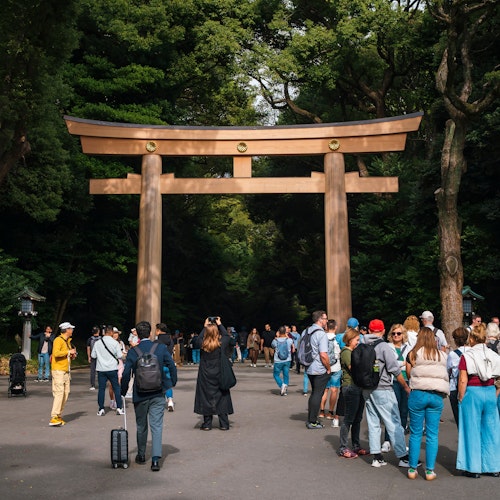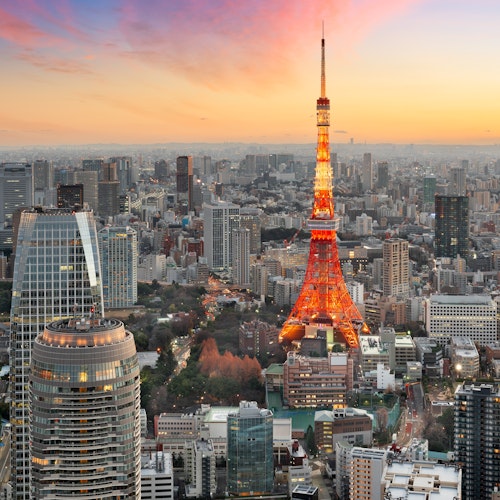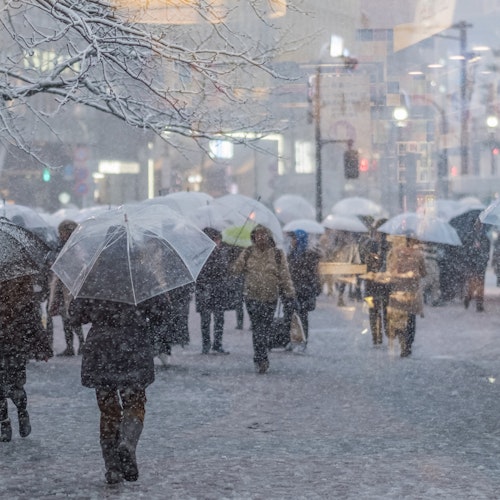
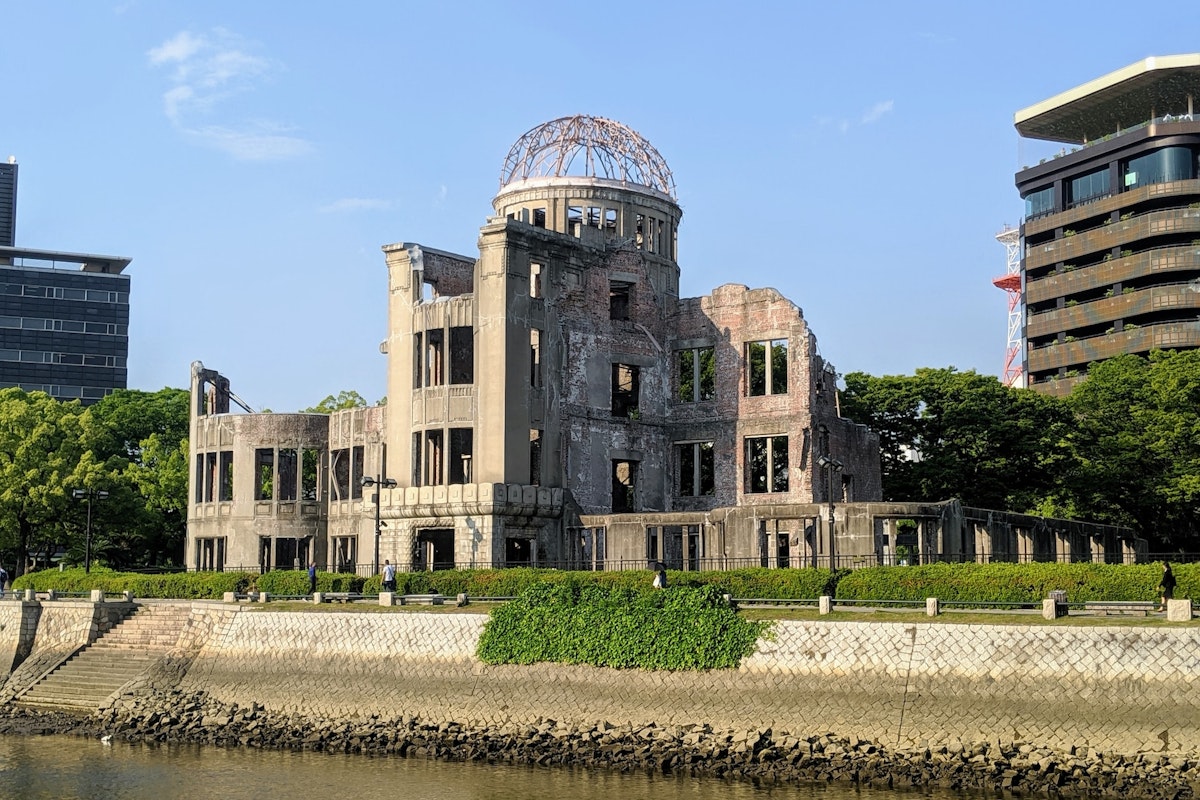
Some places in the world carry deep history and resilience, making them more than just travel destinations. Hiroshima is one such place—a city that has endured incredible hardship and now stands as a symbol of hope and peace. Visiting Hiroshima is more than just a trip; it’s a chance to reflect on the past, witness human strength, and hope for a future without war.
Despite the devastating atomic bombing in 1945, Hiroshima has rebuilt itself and now welcomes visitors from around the world. It has transformed from a city of destruction into a place of peace and renewal. A visit to Hiroshima takes you through important historical sites, vibrant culture, stunning natural scenery, and delicious food. It is a city that tells a powerful story of remembrance, resilience, and hope. Join us as we explore the inspiring journey of Hiroshima.
Hiroshima, a city whose name is etched into history, holds a rich and vibrant past that predates its infamous chapter during World War II. Founded in 1589 on the coast of the Seto Inland Sea, Hiroshima developed around the Hiroshima Castle, a hub of political and military power. But this bustling, castle-flanked city's narrative took an irreversible turn on August 6, 1945, when it became the first city to endure the devastating effects of a nuclear weapon. The atomic bomb, known as "Little Boy," detonated above the city, causing unparalleled destruction and loss of life. The resulting landscape, once teeming with life, was reduced to haunting ruins, a stark reminder of which is the skeletal Atomic Bomb Dome.
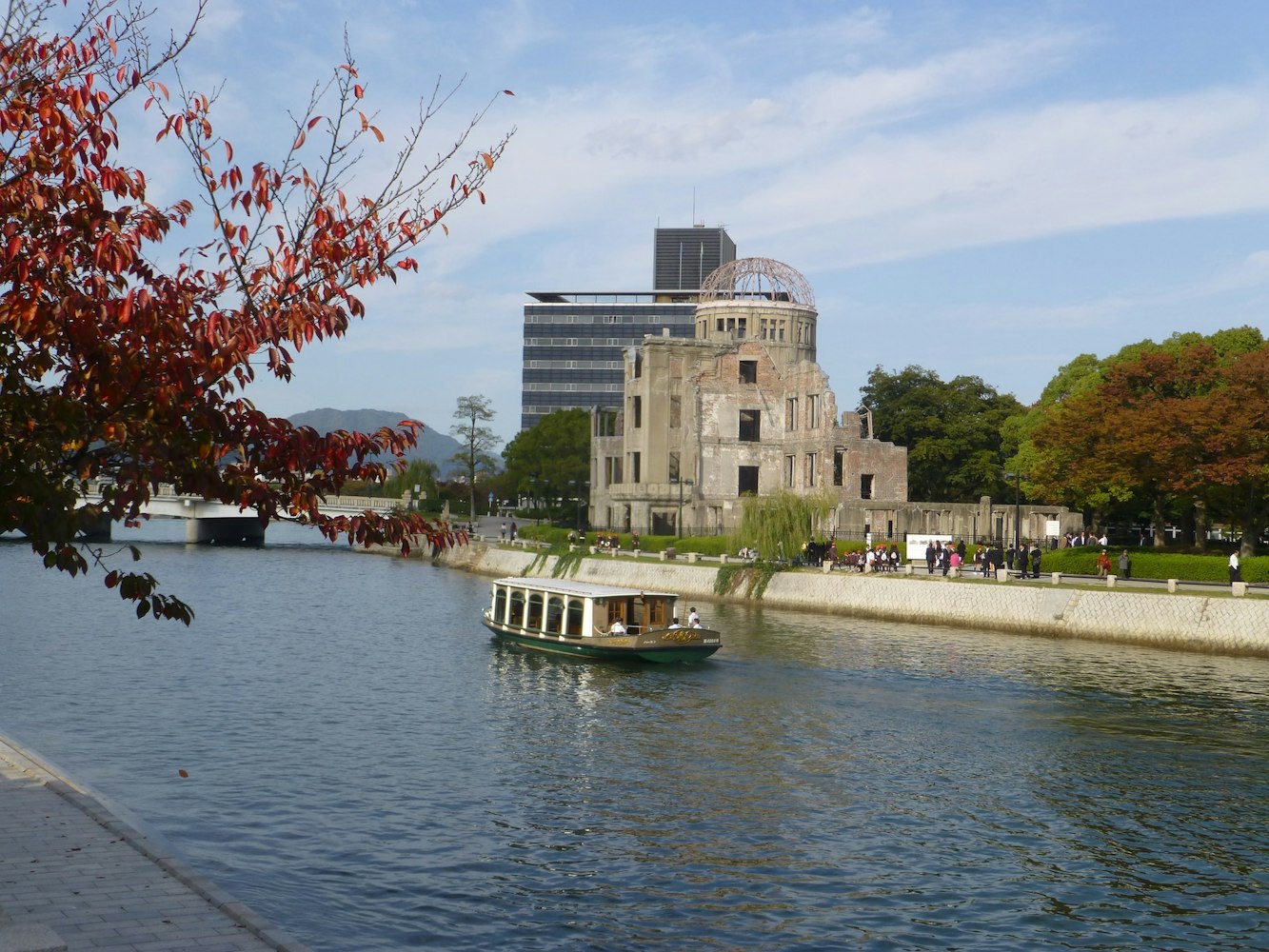
Despite the cataclysmic event that forever marked its history, Hiroshima refused to be solely defined by this tragedy. Instead, it embarked on a path of recovery and transformation, turning its past into a poignant lesson for the future. Today's Hiroshima stands as a symbol of resilience and peace, embodying the hope and strength of humanity in the face of adversity.
Nestled in the heart of Hiroshima, amidst the city's bustling rhythm, is a serene sanctuary of solace and reflection - the Hiroshima Peace Memorial Park. This site, which once thrived as the lively Nakajima district, now serves a far more poignant purpose, immortalizing the memory of the atomic bombing while simultaneously encapsulating Hiroshima's enduring message of peace and hope.
The significance of the Peace Memorial Park is manifold:
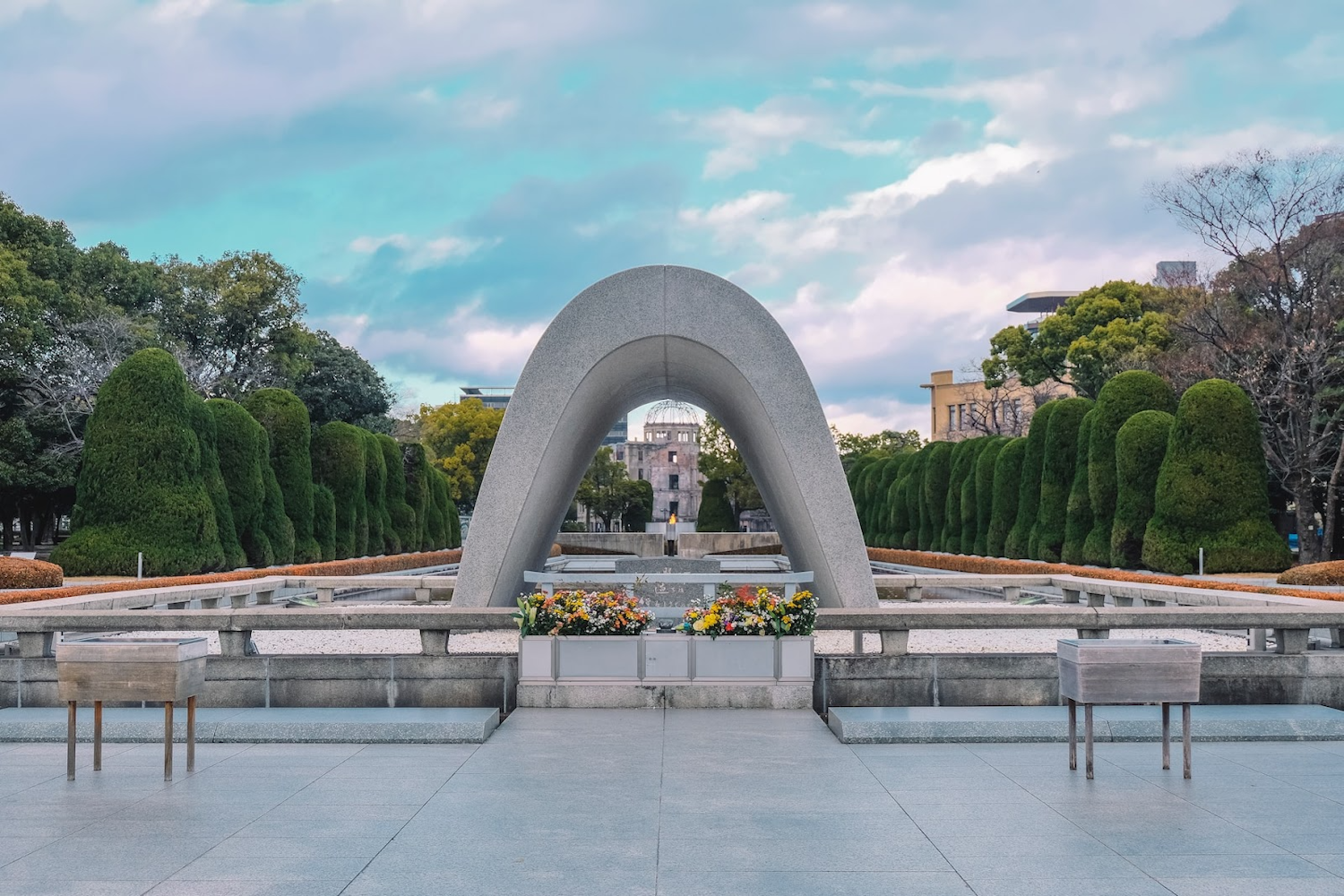
A Testament to Transformation: The park stands on the very grounds subjected to the atomic bombing's epicenter, symbolizing Hiroshima's extraordinary journey from devastation to recovery.
A Memorial to the Lost: With numerous monuments and memorials, such as the iconic A-Bomb Dome and the Children's Peace Monument, the park serves as a solemn tribute to the estimated 140,000 lives lost to the bombing and its aftermath.
A Beacon for Peace: As an advocate for global peace and the abolition of nuclear weapons, the park is a rallying point for Hiroshima's ongoing campaign against nuclear proliferation.
Wandering through the park, each monument and every memorial echoes the stories of Hiroshima's past while whispering aspirations for a future unmarred by the shadows of nuclear conflict.

Visit Hiroshima's sights with an e-bike.
Located within the Peace Memorial Park is the Hiroshima Peace Memorial Museum. It is here that Hiroshima's past unfolds, told through artifacts, exhibits, and personal stories related to the atomic bombing.
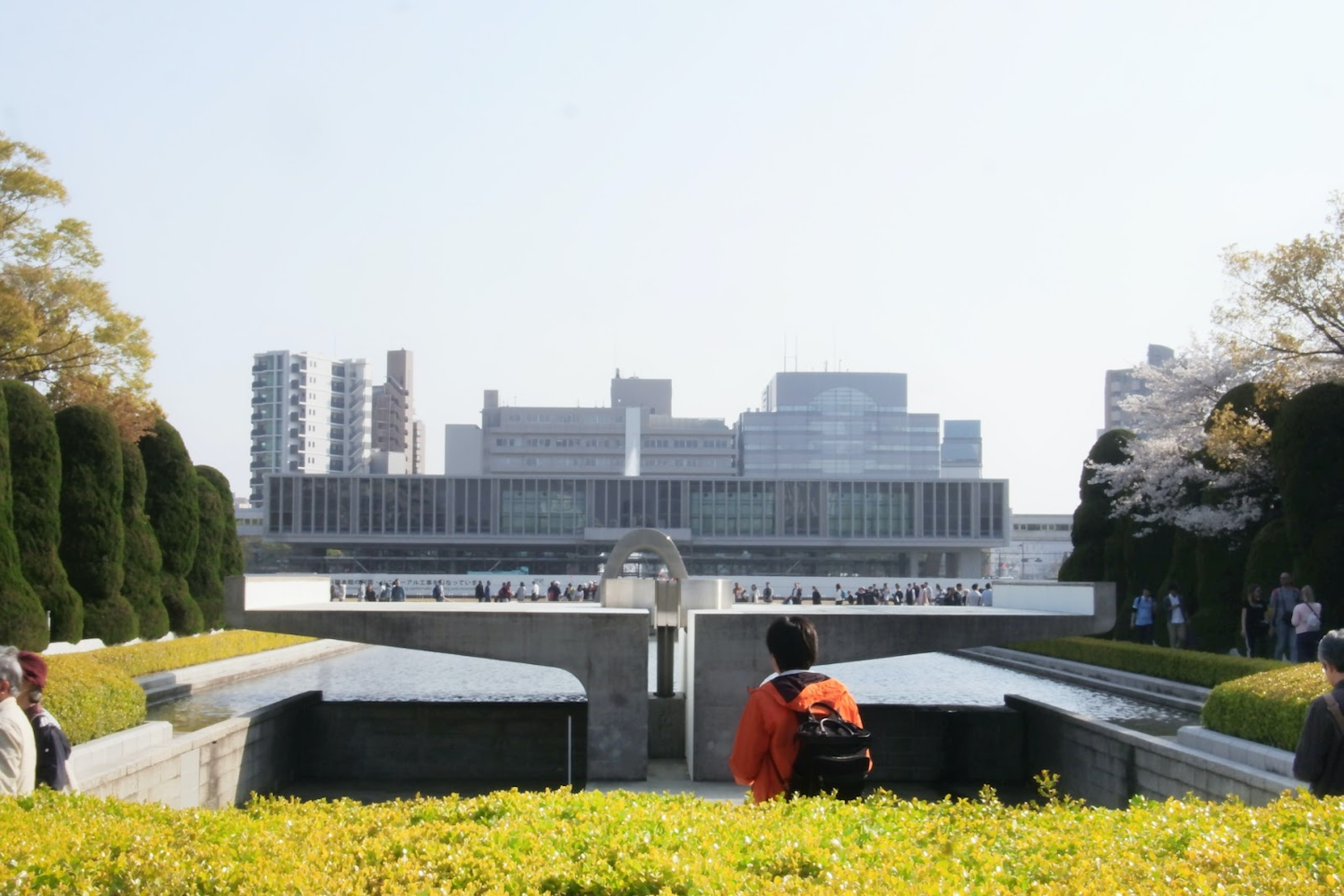
The museum offers an array of exhibits:
Poignant Artifacts: From a child's tricycle to a lunchbox and clothing remnants, the personal belongings of the victims offer a hauntingly personal perspective on the tragedy, bringing home the human reality of the event.
Photographic Recollections and Testimonials: Collections of photos and first-hand testimonials serve to bring alive individual stories, adding a tangible human dimension to the magnitude of the disaster.
Recreations of the Past: Through detailed panoramic displays and models, the museum recreates the cityscape before and after the bombing, showcasing the stark contrast and the unprecedented scale of the devastation.
A visit to the Hiroshima Peace Memorial Museum is undeniably a heartrending journey into the heart of a city's tragic past. However, it is also a journey filled with invaluable insights into Hiroshima's history, its struggle, and its ultimate triumph. As you tread through the annals of Hiroshima's past, you find yourself intrinsically linked to the city's plea for a peaceful, nuclear-free world.
No Hiroshima tour is complete without a visit to Hiroshima Castle. This magnificent edifice, often referred to as Carp Castle, is steeped in Hiroshima's history and remains a beacon of the city's extraordinary resilience. Originally constructed in the late 16th century, the castle served as the home of the feudal lords of the Hiroshima Han during the Edo period.
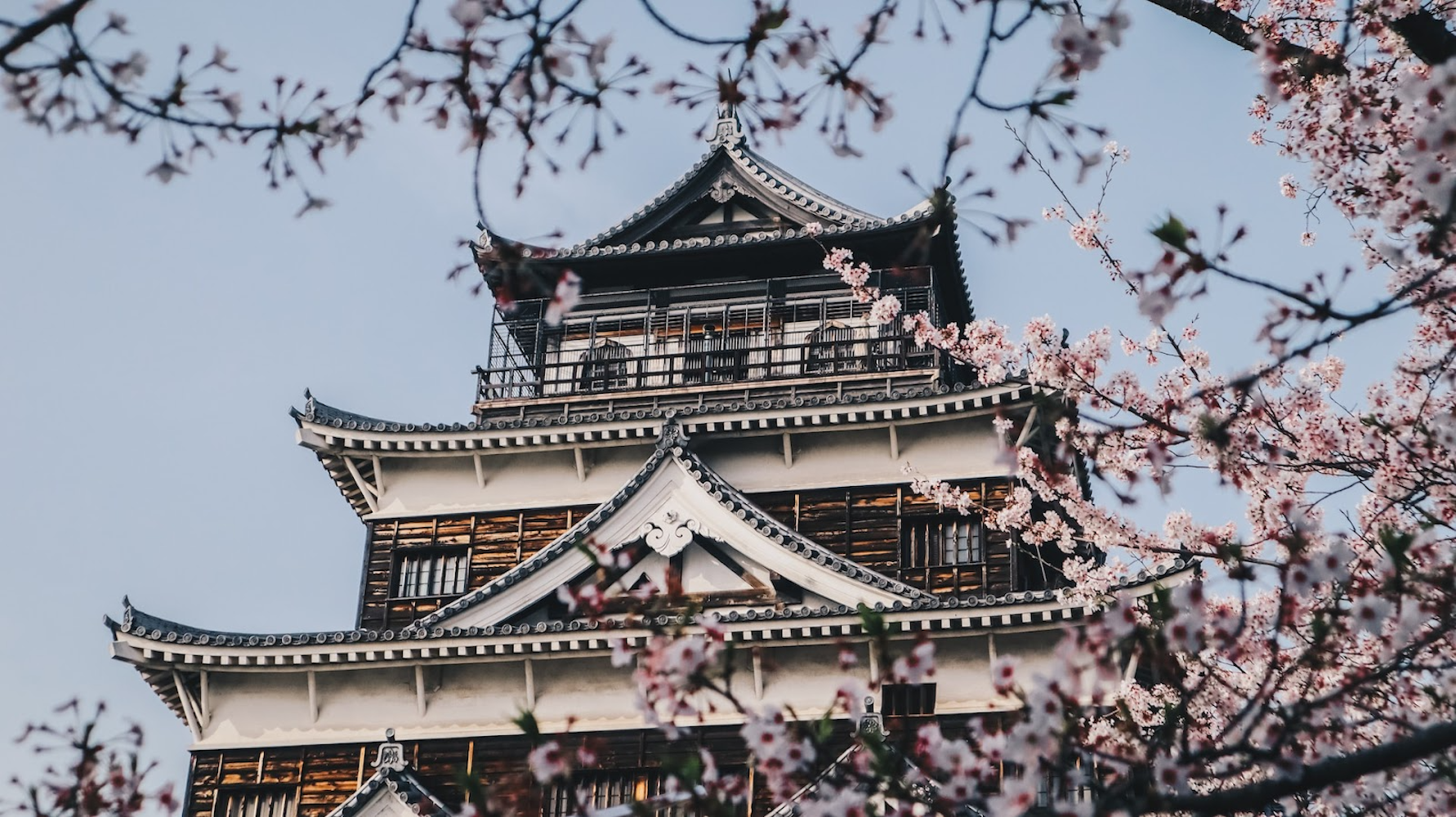
Unfortunately, like much of the city, the Hiroshima Castle was obliterated during the atomic bombing. However, in true Hiroshima spirit, the castle was rebuilt in 1958, preserving its historic architectural design. Today, the reconstructed Hiroshima Castle stands tall as a symbol of the city's resilience, a testament to its commitment to remembering the past while looking forward to the future.
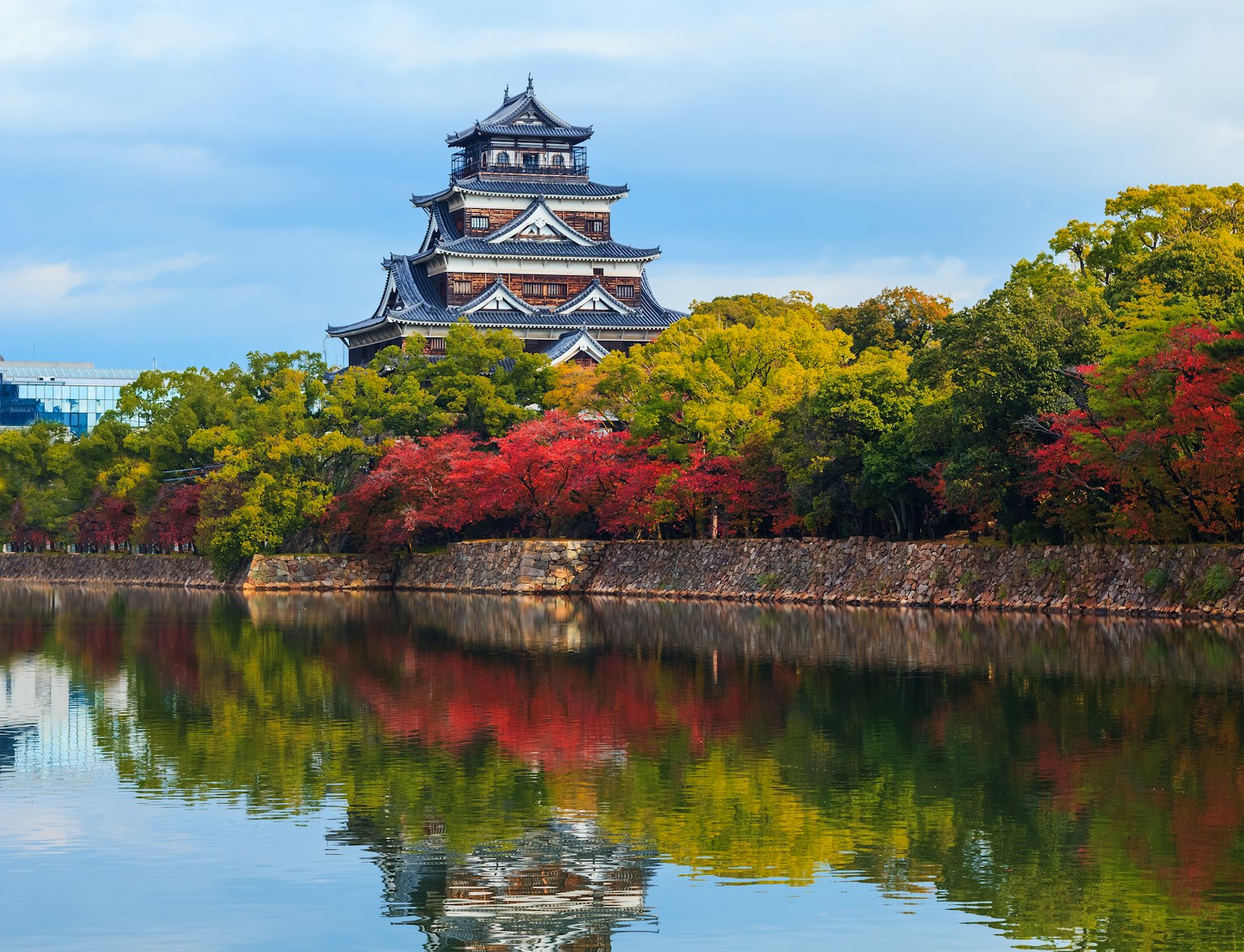
Explore Hiroshima with your custom itinerary.
Just a short distance from the Hiroshima Castle, you'll find an oasis of tranquility - the Shukkei-en Garden. The name "Shukkei" translates to "shrunken-scenery," and indeed, the garden lives up to its name, encapsulating the essence of expansive landscapes within its compact confines. Crafted in the Edo period, Shukkei-en Garden is a perfect example of traditional Japanese gardening, mirroring landscapes such as valleys, mountains, and forests. The garden was also devastated by the atomic bomb but was meticulously restored and reopened to the public in 1951.
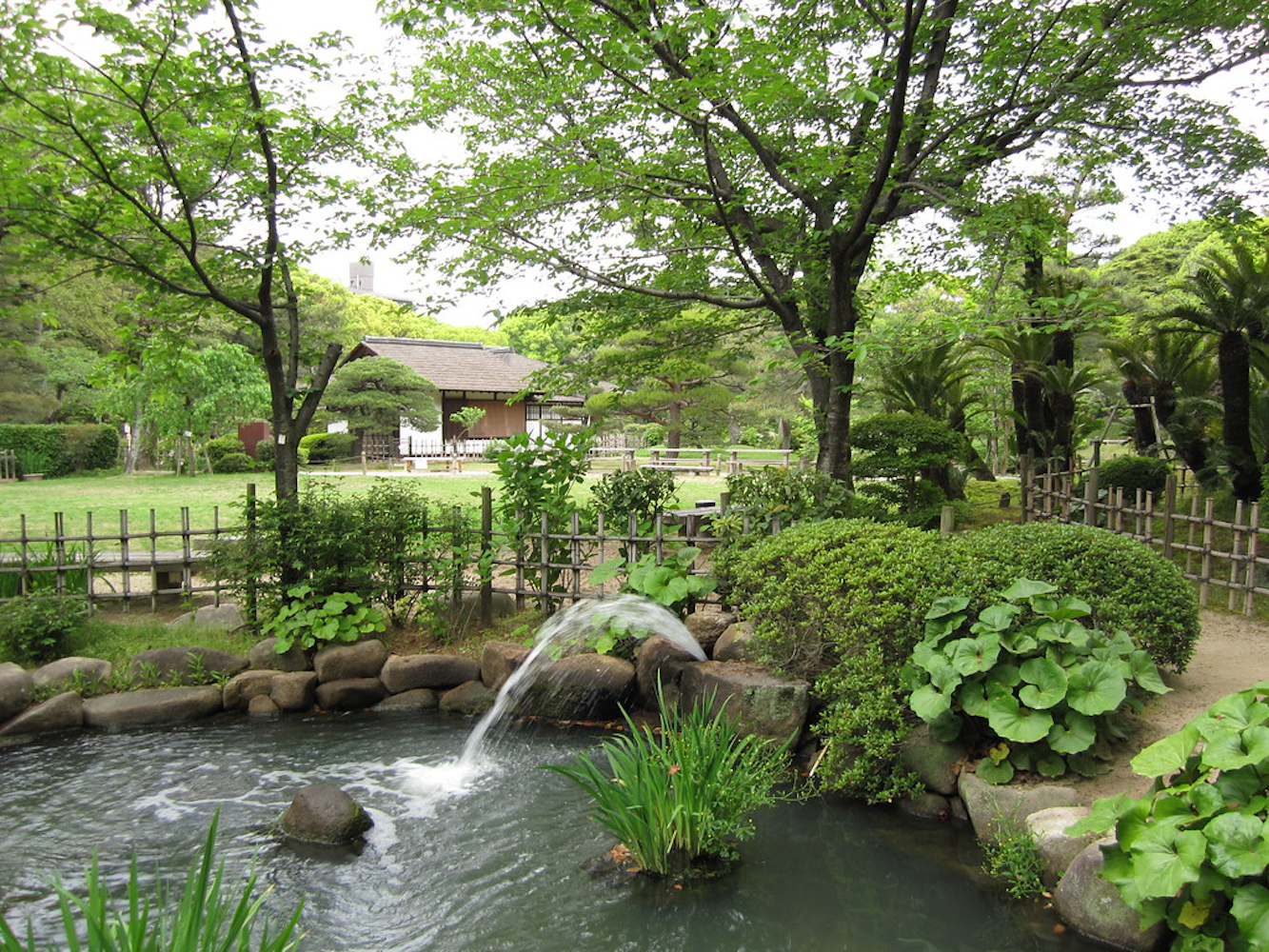
Image Credit: Colleen
When you visit Hiroshima, be sure to carve out time for this serene retreat. As you stroll around its paths, you can admire its miniature scenes, charming tea houses, and beautiful Koi-filled ponds. Each season paints the garden with its distinct palette, from cherry blossoms in spring to fiery maples in autumn, adding an extra layer of allure to your Hiroshima tour.
Miyajima Island, or Itsukushima, is an enchanting haven in Hiroshima Prefecture, renowned for its lush landscapes and the iconic floating torii gate. This vermilion gate, part of the Itsukushima Shrine, creates a captivating image as it appears to hover over the sea during high tide. The sight is more than just picturesque—it's an unforgettable testament to the island's ethereal beauty.
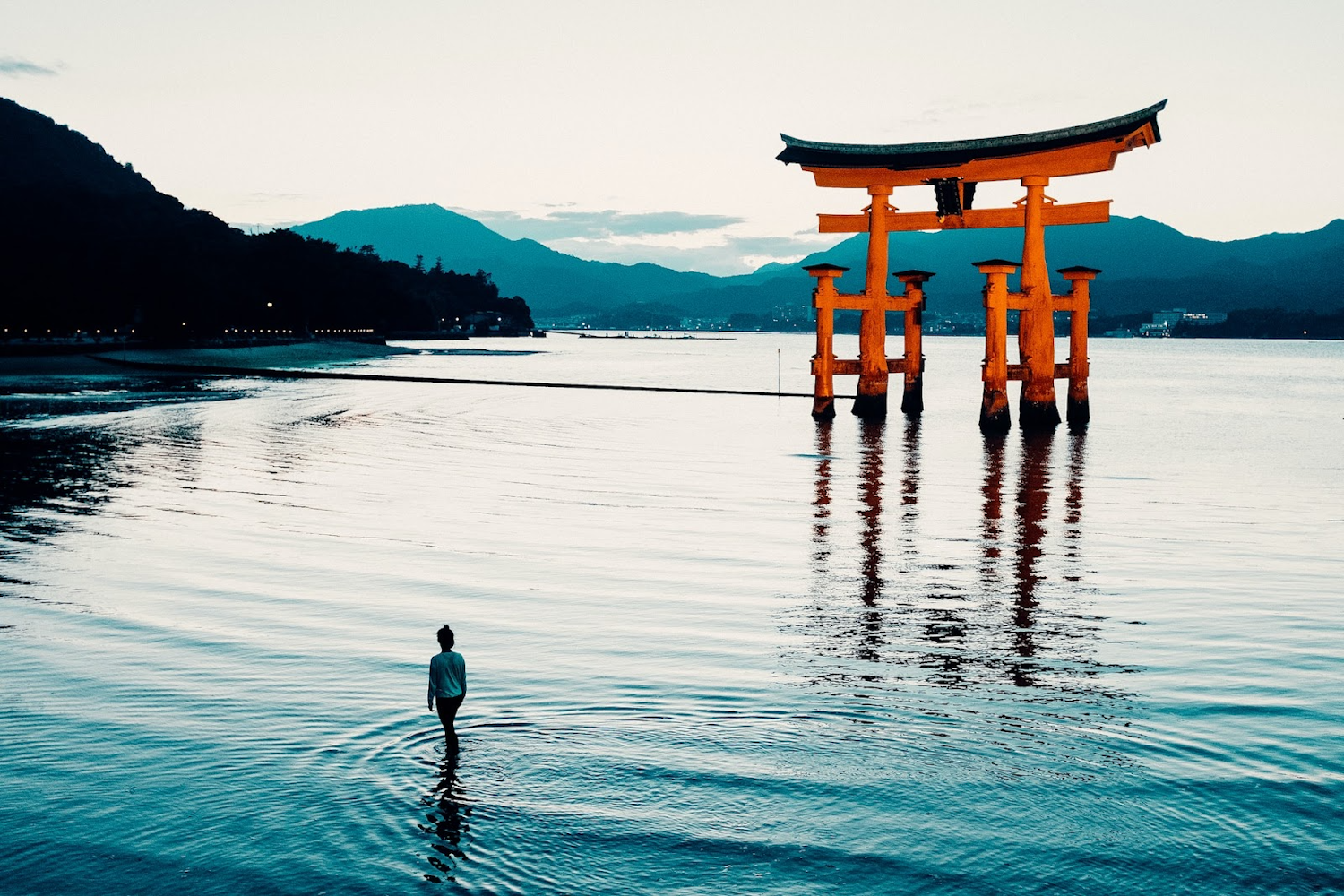
At the core of Miyajima's charm is the Itsukushima Shrine, a UNESCO World Heritage site. Built over water, the shrine symbolizes a harmonious bond with its natural surroundings, embodying Shinto beliefs. Visiting Miyajima Island and Itsukushima Shrine offers a unique chance to immerse oneself in Japan's rich cultural heritage and the tranquility of its stunning natural landscapes.
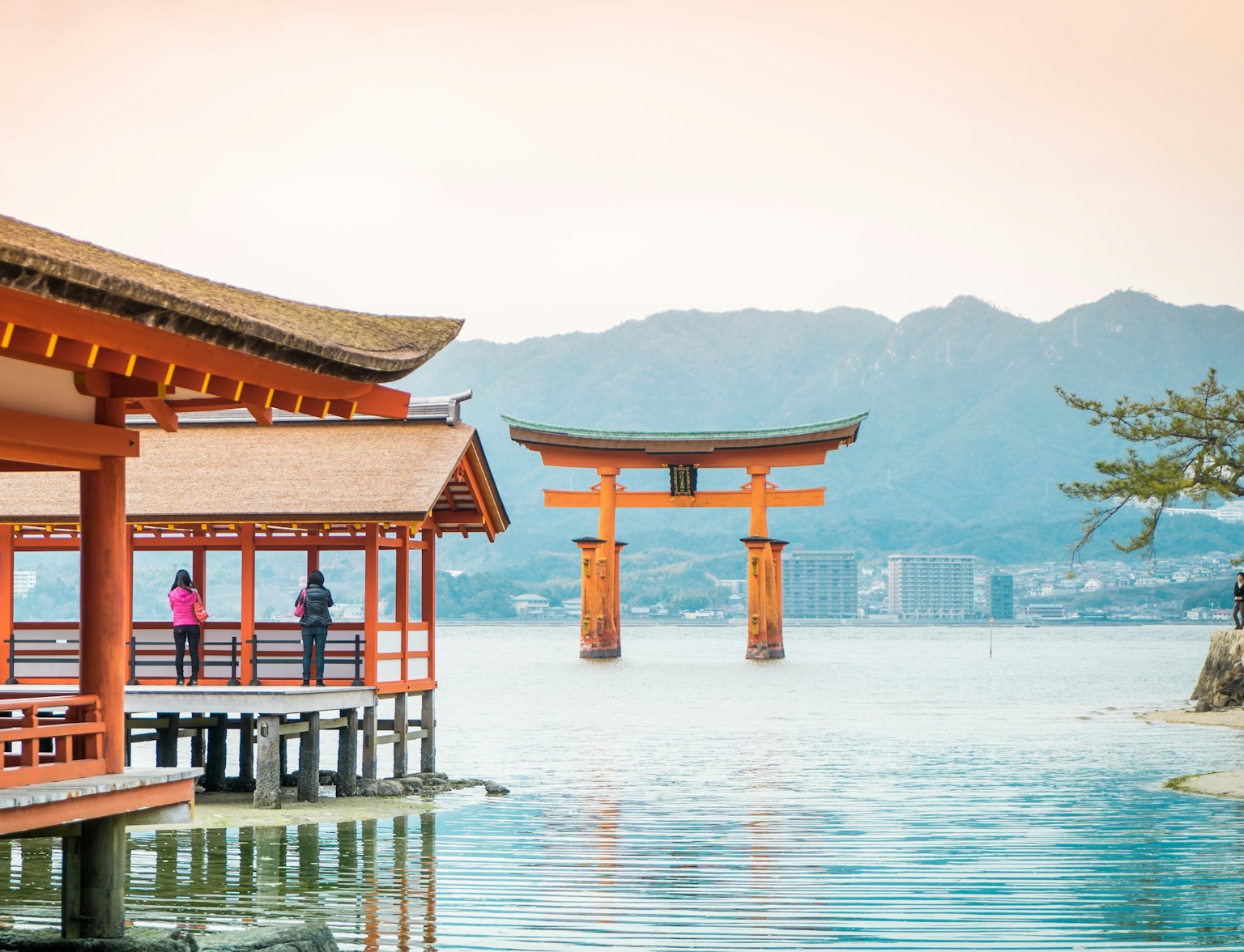
From Hiroshima, take a scenic ferry ride to the serene Miyajima.
When you visit Hiroshima, your journey is not just about exploring its history and natural beauty—it's also a culinary adventure filled with unique flavors. At the heart of Hiroshima's regional cuisine is the Hiroshima-style okonomiyaki, a savory layered pancake filled with various ingredients like cabbage, pork, and noodles, topped with a rich okonomiyaki sauce. Also prominent in the local gastronomy are Hiroshima Bay's fresh oysters, served in various preparations, from raw to grilled, and incorporated in a myriad of dishes.
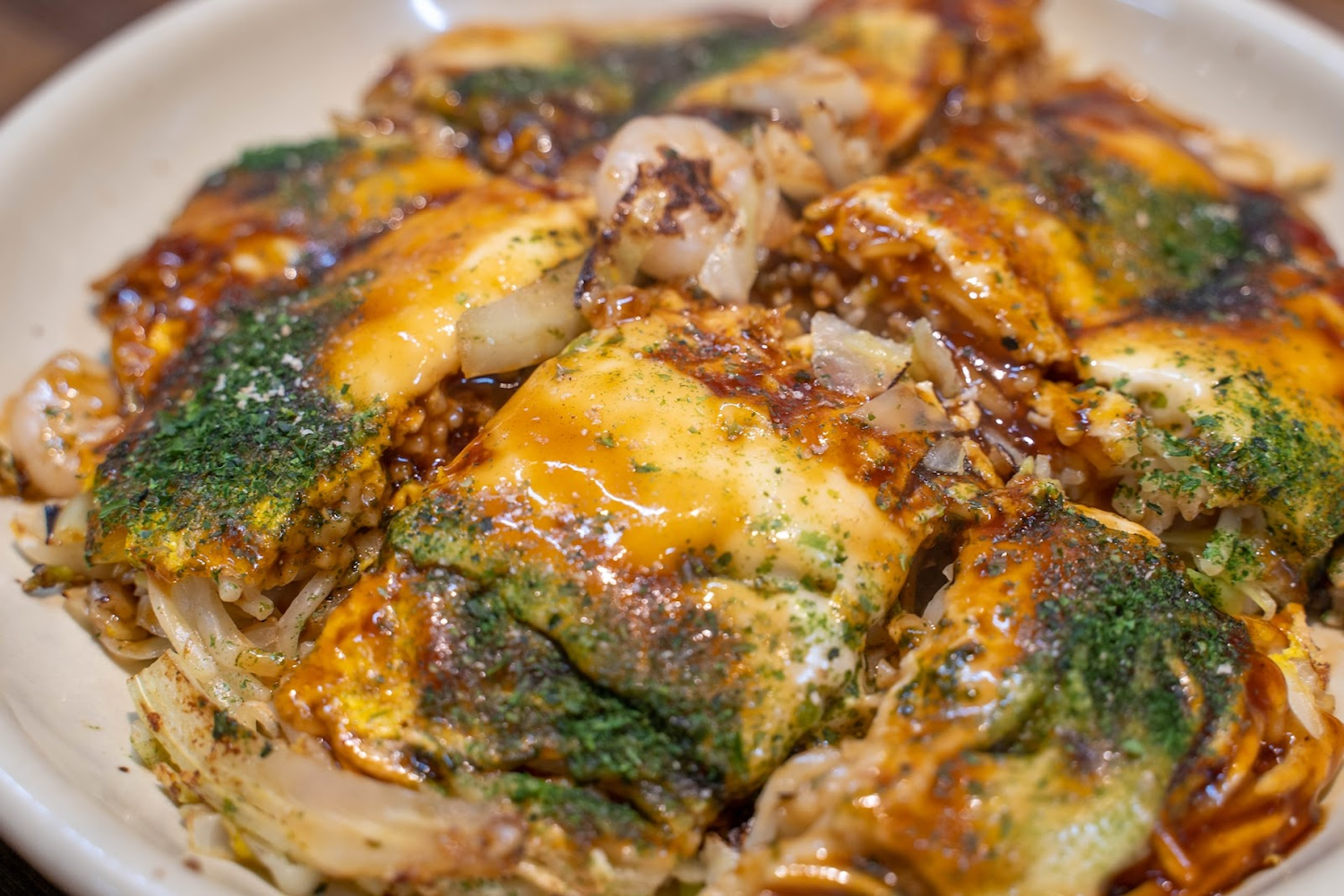
For an immersive experience, head over to Okonomi-mura, a haven for okonomiyaki lovers with over 20 stalls, each with its unique interpretation of the dish. For seafood enthusiasts, the Hiroshima Miyajima-guchi Market offers a taste of the freshest catch, including the famous local oysters. Whether you're a foodie or a casual traveler, exploring Hiroshima's culinary landscape is a feast that should not be missed.
Venturing beyond Hiroshima city, a journey to the historic town of Miyajima-guchi offers a delightful blend of tranquility and heritage. Meanwhile, the majestic Sandankyo Gorge beckons nature lovers with its mesmerizing waterfalls and cliffs, serving as a perfect backdrop for hiking and boat rides.
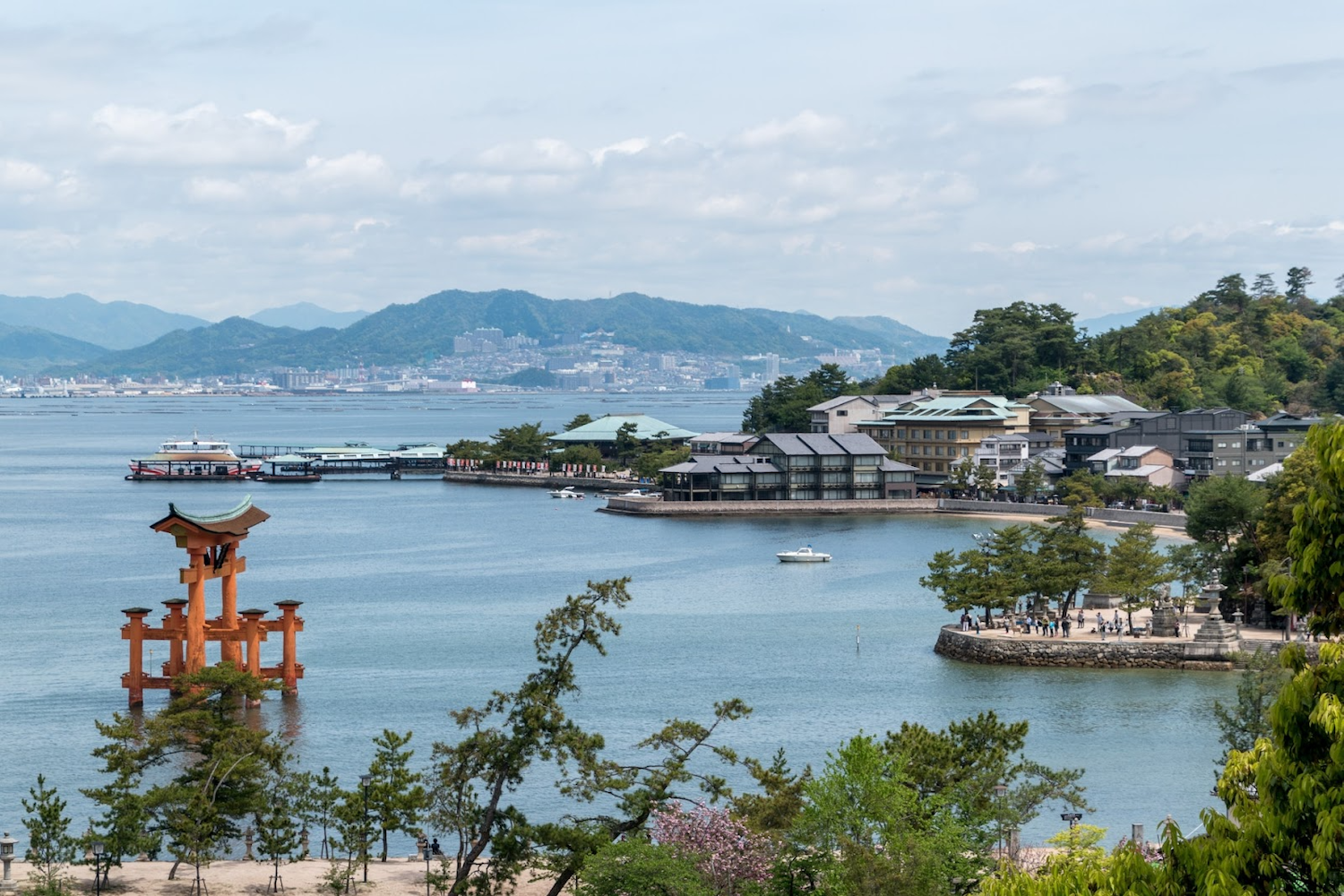
Outdoor activities abound in Hiroshima. Traverse its scenic cycling routes or embark on a countryside hike to experience the region's stunning landscapes. If visiting in spring, the sight of cherry blossoms in bloom at Hiroshima Peace Memorial Park and Shukkei-en Garden is a spectacle not to be missed, making Hiroshima a city that harmoniously marries history and nature in one remarkable experience.
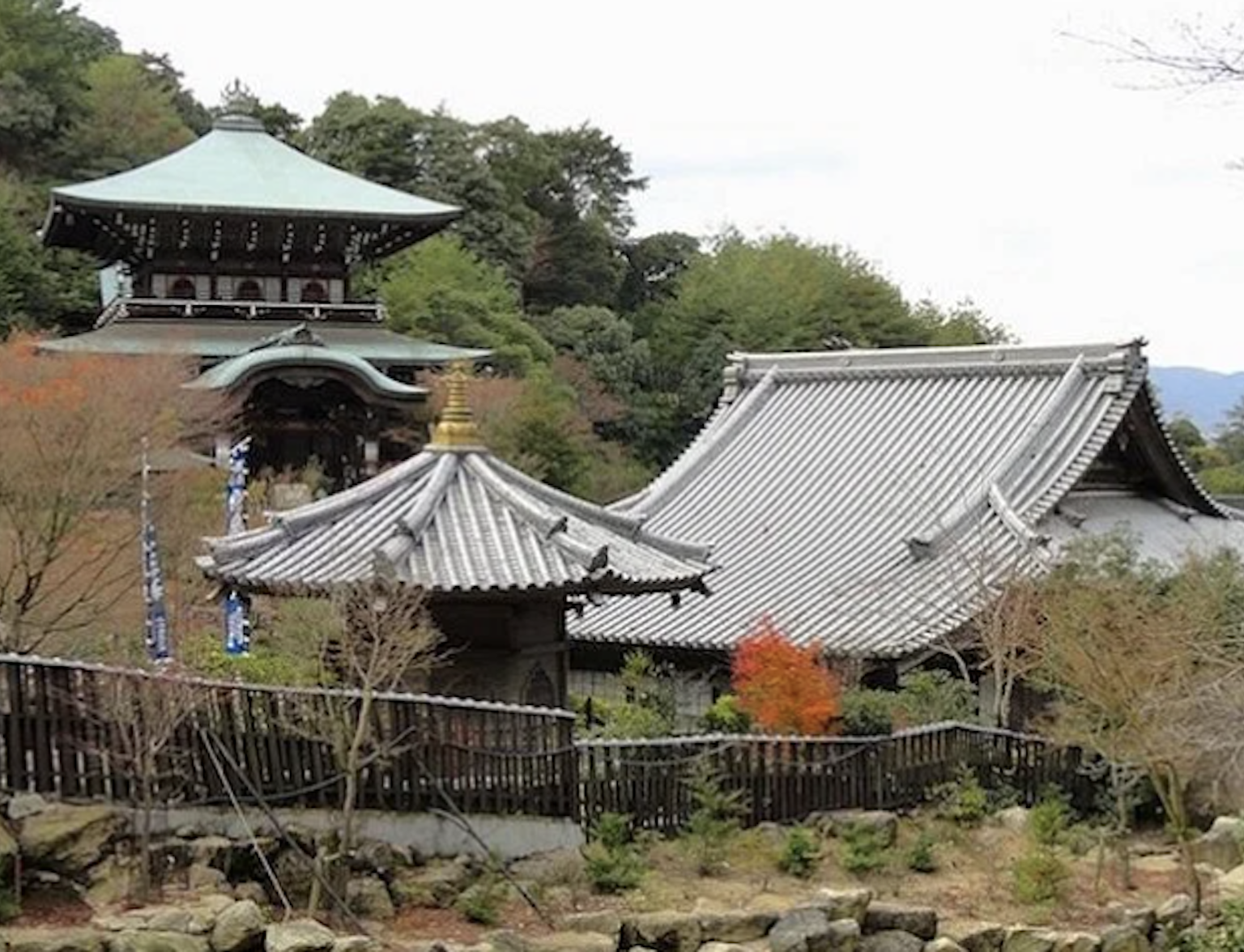
Experience the untouched beauty of Sandankyo Valley on a day tour from Hiroshima.
The vibrant culture of Hiroshima is encapsulated in its annual festivals and events. On August 6th each year, the solemn Hiroshima Peace Memorial Ceremony marks the anniversary of the atomic bombing with a moment of silence, prayers, and the release of paper lanterns, embodying a global plea for peace.
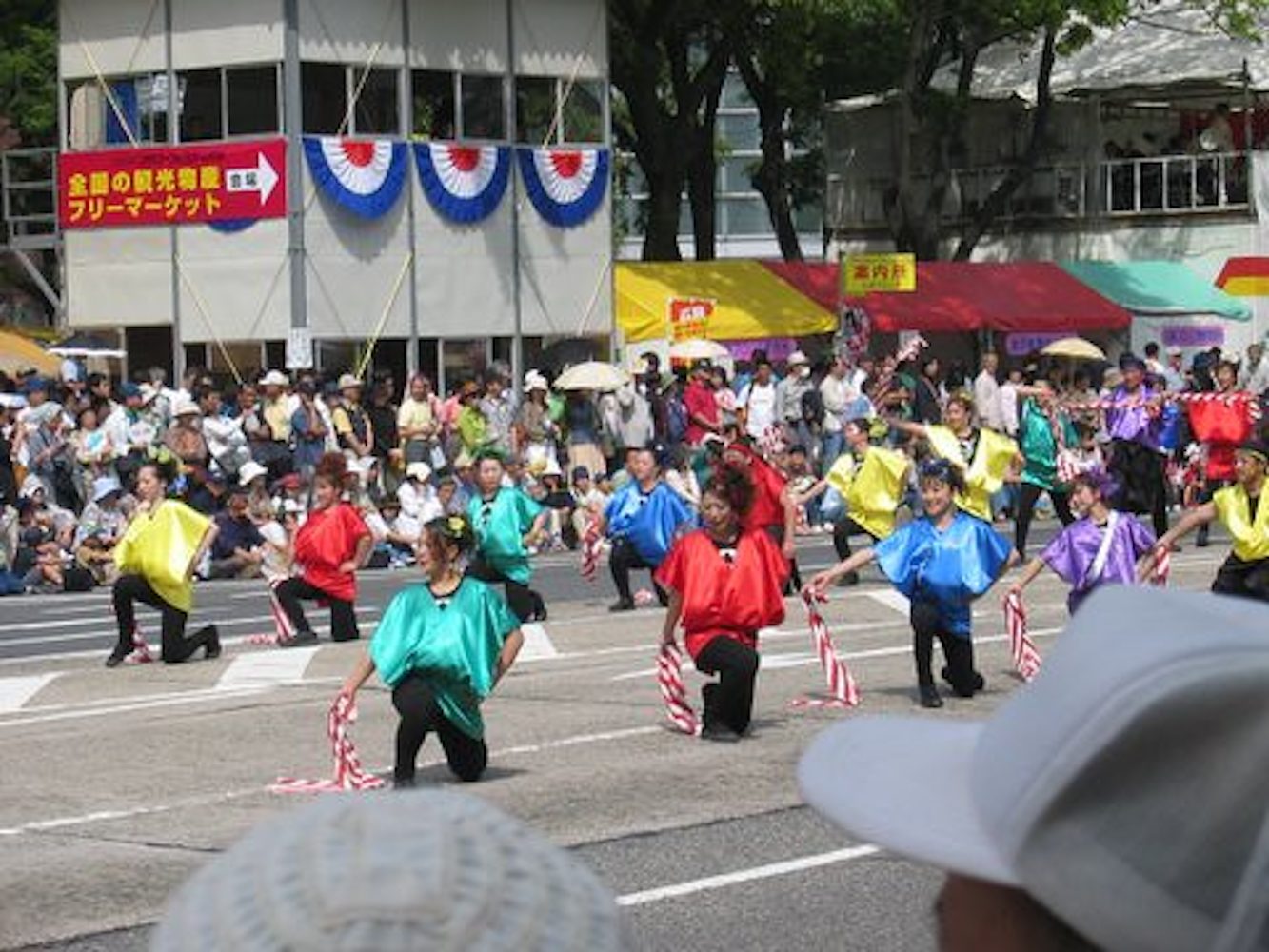
Image Credit: Vernon Fowler
In stark contrast, the Hiroshima Flower Festival, held annually from May 3rd to May 5th, is a lively three-day event featuring colorful flower displays, parades, performances, and an assortment of food stalls. These two seminal events showcase Hiroshima's resilience and optimism and are essential experiences in any Hiroshima travel itinerary, offering unique insights into the city's history, culture, and commitment to peace.
Hiroshima's essence is woven into the personal stories and perspectives shared by its locals and visitors, capturing the city's history and message of peace. From Mr. Yoshida, a shopkeeper recounting his grandmother's tales of resilience in the aftermath of the atomic bombing, to Anna, a traveler moved by the Peace Memorial Museum's reminders of the horrors of war, these narratives reflect the indomitable spirit of Hiroshima.
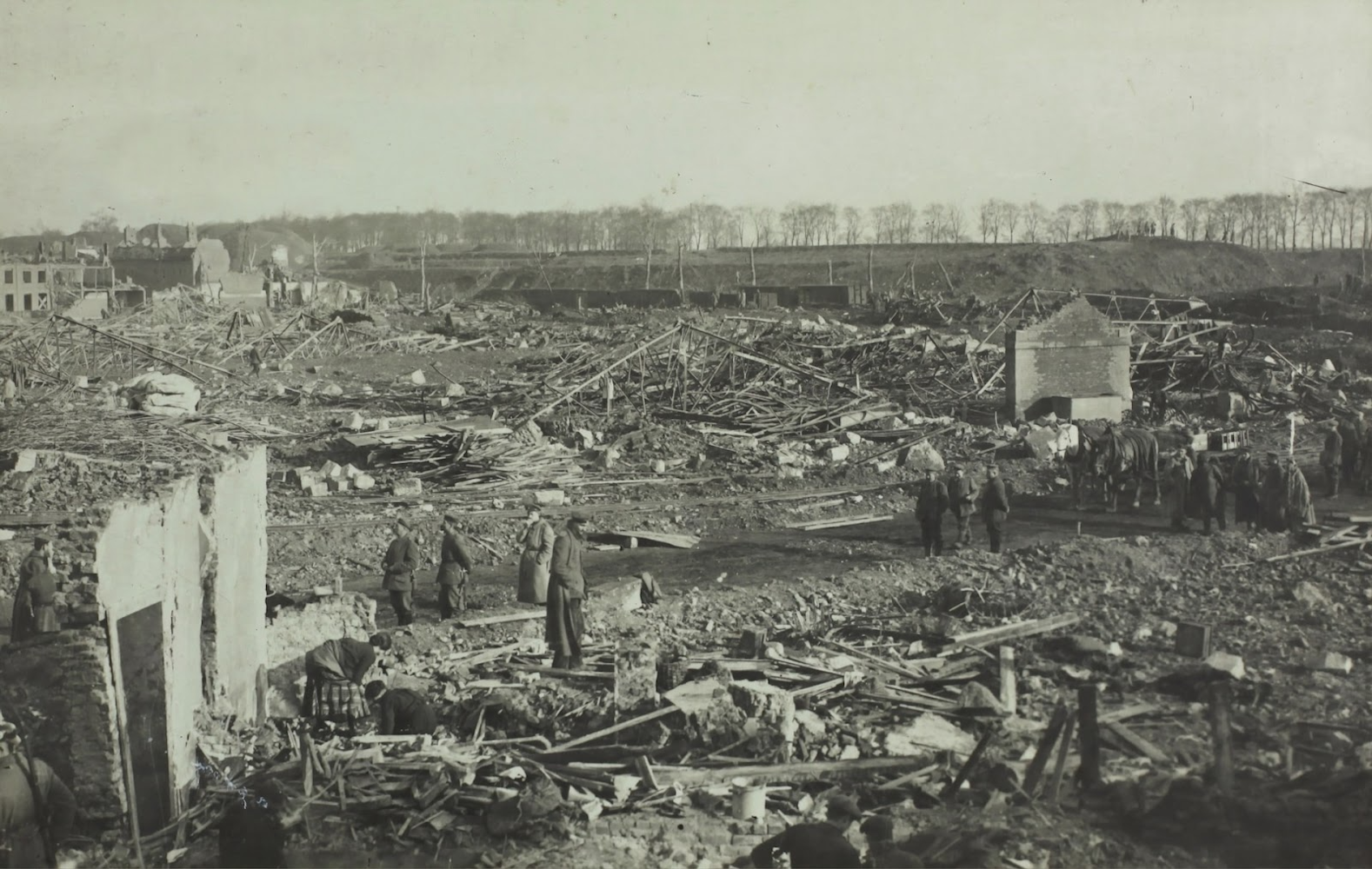
Through these stories, Hiroshima reminds us of the importance of remembering the past and learning from it. They highlight the city's enduring resilience, its commitment to peace, and the significance of fostering a future built on the lessons of history. Engaging with these local perspectives offers a profound understanding of Hiroshima's journey and deepens our own connection to the city and its message.
As we conclude our journey through Hiroshima, we are left with a profound appreciation for the city's rich history, resilience, and enduring message of peace. From the haunting reminders of the atomic bombing to the vibrant festivals that celebrate life and unity, Hiroshima invites us to reflect, learn, and embrace a vision of a better world.
The stories of locals and visitors alike have illuminated Hiroshima's indomitable spirit, reminding us of the importance of remembering the past and fostering a future rooted in peace. It is a legacy that resonates within us, urging us to become ambassadors of peace in our own lives and communities. May the lessons of Hiroshima inspire us to seek understanding, to stand against the horrors of war, and to strive for a world where peace triumphs over conflict. Let us carry the spirit of Hiroshima within us as we move forward, embracing a future where remembrance, hope, and unity guide our path.
